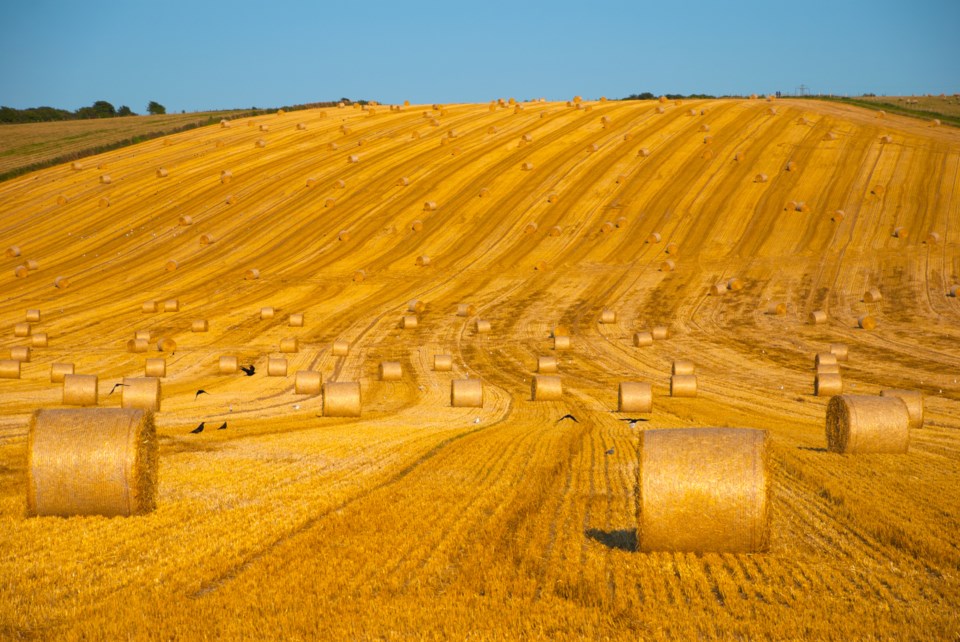REGINA - Another warm week has helped crops maintain the rapid rate of development seen throughout the year, according to the crop report for the period of July 11 to 17. The warm weather has also helped many producers progress through their haying operations and 71 per cent of the province's first cut of hay has been baled or silaged. Provincially, producers are estimating hay yield at 1.08 tons/acre. This is comparable with the five-year average of 1.06 tons/acre and just behind the 10-year average of 1.17 tons/acre.
Pockets of moisture moved through the province this past week. The most rain received this week was reported near Old Wives, with 33 mm being reported. Trace amounts of moisture were reported across much of the province, while some areas received no rain. The warm weather caused another decrease in topsoil moisture this week. Cropland topsoil moisture is 15 per cent adequate, 57 per cent short and 28 per cent very short. Hay and pastureland topsoil moisture is 12 per cent adequate, 50 per cent short and 38 per cent very short. The drought conditions in the southwest and west-central regions were not abated by the trace amounts of moisture or localized thundershowers.
Sixty-one per cent of fall cereals are at normal stages of development for this time of year, while 35 per cent are ahead. Fifty-five per cent of spring cereals are at normal stages of development, while 37 per cent are ahead of normal stages of development. Oilseeds are 58 per cent are at normal stages while 33 per cent are ahead of normal stages. Pulses have advanced slightly this week and are now 35 per cent ahead of normal stages of development for this time of year, while 61 per cent are at normal stages of development.
Haying has progressed quickly this week, with only 13 per cent of the first cut of hay still standing, 16 per cent is cut and 71 per cent is baled or silaged. Hay quality ranges from fair to excellent, with the majority of hay rated as good quality. Producers are estimating hay yields are comparable with the five-year average and are also estimating silage yield at 3.13 tons/acre. Few producers are expecting a second cut of hay this year and some are expressing concerns of feed shortages this winter. If producers are concerned about water quality for their livestock, they are encouraged to bring water samples into their for testing.
Crop damage this past week is mostly due to dry conditions and grasshoppers and there are also a few reports of disease. Producers are encouraged to look at their economic thresholds while scouting for grasshoppers.
Dry conditions can be stressful for producers and they are reminded to take safety precautions in all the work they do. The Farm Stress Line is available to provide support to producers toll free at 1-800-667-4442. For producers dealing with dry conditions, additional resources are available through or by contacting their regional office.
Follow the 2023 Crop Report on Twitter at @SKAgriculture.


